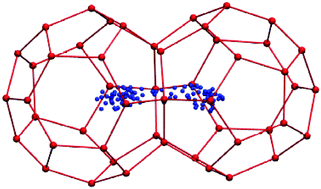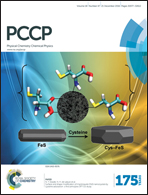Competing quantum effects in the free energy profiles and diffusion rates of hydrogen and deuterium molecules through clathrate hydrates†
Abstract
Clathrate hydrates hold considerable promise as safe and economical materials for hydrogen storage. Here we present a quantum mechanical study of H2 and D2 diffusion through a hexagonal face shared by two large cages of clathrate hydrates over a wide range of temperatures. Path integral molecular dynamics simulations are used to compute the free-energy profiles for the diffusion of H2 and D2 as a function of temperature. Ring polymer molecular dynamics rate theory, incorporating both exact quantum statistics and approximate quantum dynamical effects, is utilized in the calculations of the H2 and D2 diffusion rates in a broad temperature interval. We find that the shape of the quantum free-energy profiles and their height relative to the classical free energy barriers at a given temperature, as well as the rate of diffusion, are strongly affected by competing quantum effects: above 25 K, zero-point energy (ZPE) perpendicular to the reaction path for diffusion between cavities decreases the quantum rate compared to the classical rate, whereas at lower temperatures tunneling outcompetes the ZPE and as a result the quantum rate is greater than the classical rate.


 Please wait while we load your content...
Please wait while we load your content...